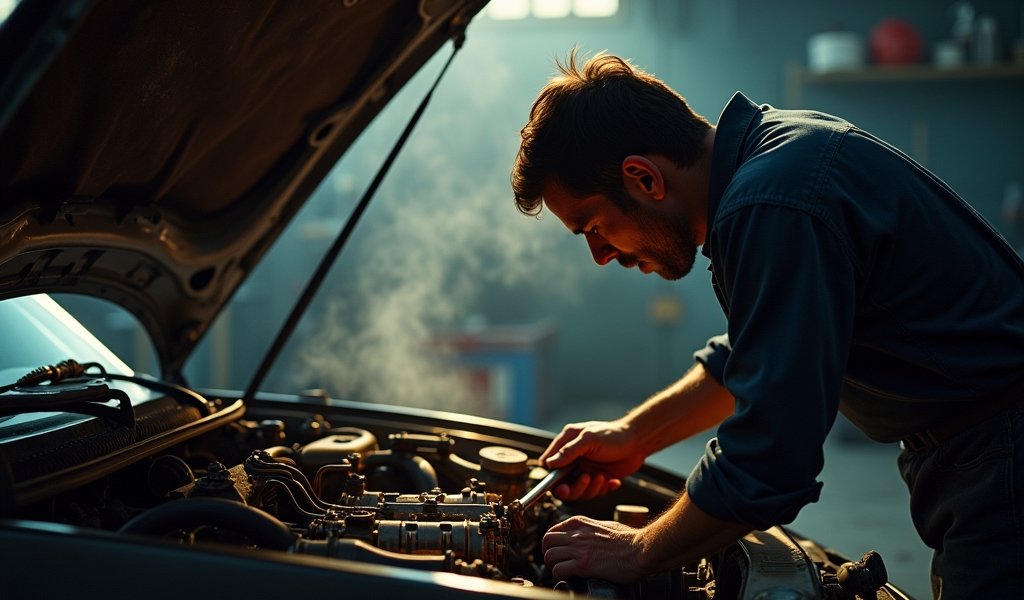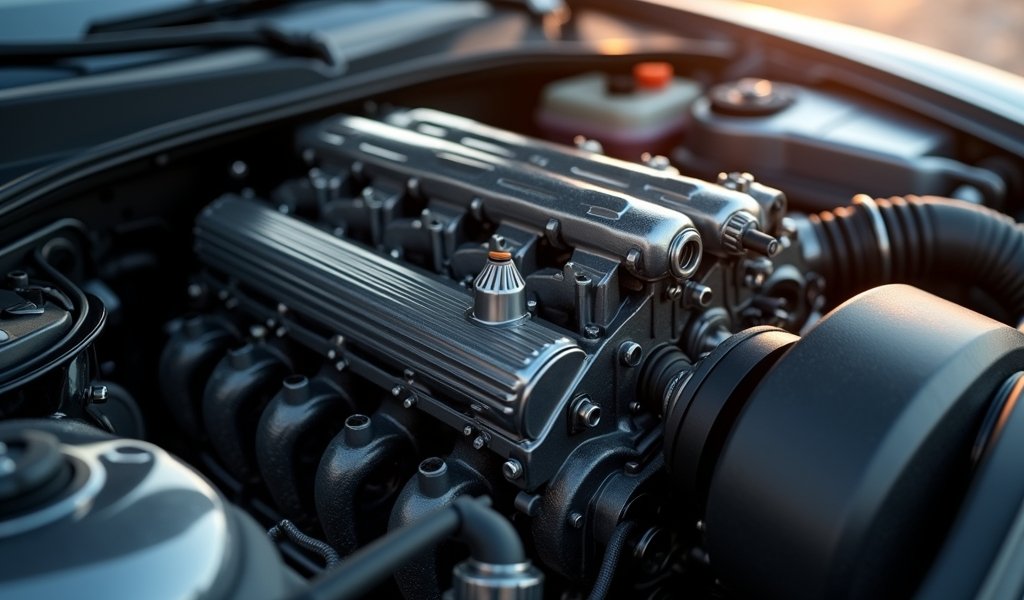Overview
This article provides seven practical solutions for diagnosing and fixing fuel injection pump timing issues, ranging from checking timing marks and proper installation to system cleaning and professional calibration. Proper fuel injection timing is crucial for optimal engine performance, fuel efficiency, and longevity, with symptoms of incorrect timing including poor fuel economy, difficult starting, unusual smoke, knocking noises, and power loss.
Table of Contents
- Understanding Fuel Injection Pump Timing
- Symptoms of Incorrect Pump Timing
- Fix #1: Checking Timing Marks
- Fix #2: Proper Pump Installation
- Fix #3: Replacing Timing Belt or Chain
- Fix #4: Calibration with Diagnostic Tools
- Fix #5: Addressing Mechanical Wear
- Fix #6: Fuel System Cleaning
- Fix #7: Professional Assistance
- Conclusion
- Frequently Asked Questions
Understanding Fuel Injection Pump Timing
Fuel injection pump timing ranks among the most critical aspects of your vehicle’s engine performance. When properly set, it ensures your engine receives the right amount of fuel at precisely the correct moment during the combustion cycle. Think of it as the conductor of an orchestra – when the timing’s off, even by a millisecond, the entire symphony falls apart. I once had a customer whose truck sounded like a washing machine full of wrenches until we corrected the injection timing – the transformation was nothing short of miraculous!
For diesel engines especially, injection timing determines not just performance but also fuel efficiency, emissions, and overall engine longevity. The pump delivers high-pressure fuel to the injectors, which then spray fuel into the combustion chambers. This intricate dance must happen at exactly the right moment relative to the piston position. In my 20 years as a mechanic, I’ve seen engines gain 30% more power and significantly better mileage just from proper injection pump timing adjustments – it’s like giving your vehicle a secret performance upgrade without the hefty price tag.
Modern electronic fuel injection systems utilize sophisticated computer controls, while older mechanical systems rely on physical timing marks and adjustment mechanisms. Both require precise calibration for optimal operation. I remember working on an old farm tractor that had been struggling for years – after adjusting the mechanical injection pump timing by just two degrees, the farmer called me laughing because he thought I’d secretly installed a new engine overnight. That’s the dramatic difference proper timing can make!
Symptoms of Incorrect Pump Timing
Recognizing the warning signs of improper fuel injection pump timing can save you thousands in potential engine damage. Poor fuel economy often appears as the first red flag – your vehicle suddenly becomes a gas-guzzling monster without explanation. I had a client who thought his teenage son was secretly taking the family SUV for joyrides because the fuel gauge kept dropping unexpectedly – turns out it was just injection timing that had drifted!
Difficult starting plagues vehicles with timing issues, particularly in cold weather. The engine may crank longer than usual or require multiple attempts before firing up. My neighbor’s diesel pickup would need so many attempts to start on winter mornings that he’d actually drain the battery before succeeding – a simple timing adjustment solved his problems and probably saved his marriage, judging by his wife’s previous morning grumpiness!
Black exhaust smoke signals incomplete combustion, often resulting from fuel being injected too late in the cycle. Conversely, white smoke might indicate fuel burning too early. A client once told me his truck was so embarrassing to drive that he’d park three blocks from his destination to avoid the dramatic smoke show he’d create upon arrival – properly timed injection eliminated his “smoke signal” problem entirely.
Unusual knocking noises, rough idling, and general loss of power all point toward timing problems. The engine might hesitate when accelerating or surge unexpectedly at steady speeds. I’ll never forget the contractor whose work truck would mysteriously lose power whenever he tried to merge onto the highway – his timing was so far off that under load, the engine would nearly stall out completely. After fixing the injection timing, he called me from the highway yelling excitedly that he’d finally reached the passing lane for the first time in months!

Fix #1: Checking Timing Marks
Verifying alignment of timing marks constitutes the first and most fundamental step in addressing injection pump timing issues. Most engines feature specific marks on the crankshaft pulley, camshaft sprocket, and injection pump that must align at top dead center (TDC) of the compression stroke. Using a timing light or simply visual inspection, depending on your engine type, you can confirm proper alignment. I once helped a frustrated shade-tree mechanic who had been chasing an engine problem for weeks – turns out he was looking at the wrong timing mark entirely, about 180 degrees off where it should have been!
For mechanical injection pumps, locate the timing marks on the pump flange and the corresponding mark on the engine. Rotate the engine slowly by hand until the crankshaft reaches the specified position, then verify alignment. Some engines require setting the timing to a specific number of degrees before or after TDC. My colleague spent an entire weekend troubleshooting a farm tractor only to discover the timing marks had been painted over during a previous restoration – a little careful cleaning revealed the original marks and solved the problem in minutes!
Electronic systems may require using a scan tool to confirm the timing is within specifications. These tools can read the actual injection timing and compare it to manufacturer specifications. The adjustment process varies significantly between different makes and models, so consulting the service manual becomes absolutely essential. I recall a customer who tried setting his diesel timing using a YouTube tutorial for a completely different engine – the resulting knocking was so loud he claimed it scared his neighbor’s cat right up a tree!
Fix #2: Proper Pump Installation
Correct installation of the fuel injection pump plays a crucial role in timing accuracy. When replacing or reinstalling a pump, ensure it sits properly in its mounting location without binding or misalignment. The drive gear or coupling must engage correctly with its mate on the engine side. I once witnessed a rushed installation where a tiny sliver of an old gasket prevented the pump from seating fully – that microscopic misalignment caused weeks of performance issues before being discovered!
Always use new gaskets and seals during installation to prevent leaks and ensure proper positioning. Tighten mounting bolts in the sequence specified by the manufacturer and to the correct torque specifications. Over-tightening can distort the pump housing, while under-tightening may allow it to shift during operation. A buddy of mine tried to save money by reusing old gaskets on his diesel truck – the resulting fuel leak created such a slippery driveway that his wife’s shopping bags (and then his wife) went sliding across the concrete in spectacular fashion!
For belt or chain-driven pumps, ensure proper tension according to specifications. Too tight can cause premature wear and affect timing, while too loose allows timing variations. After installation, check for any timing chain stretch that might affect the synchronization. I’ll never forget helping a customer who had installed his own injection pump but couldn’t figure out why it ran terribly – turns out he’d somehow managed to install it rotated 180 degrees from correct orientation, creating what I can only describe as the world’s most elaborate unintentional anti-theft device!
Fix #3: Replacing Timing Belt or Chain
Worn timing belts or chains directly impact injection pump timing since they connect the crankshaft to the camshaft and often the injection pump itself. Over time, these components stretch, affecting the precise relationship between engine components. Following the timing belt replacement schedule recommended by your vehicle manufacturer prevents catastrophic failures. I remember a client who ignored his timing belt maintenance – the resulting engine damage cost more than his entire vacation budget, forcing him to explain to his family why they were enjoying a “staycation” in their backyard that year!
When replacing these components, always use quality parts that meet or exceed OEM specifications. Cheaper alternatives might save money initially but often stretch prematurely, causing timing issues to return quickly. Proper tensioning during installation ensures long-term reliability. A fellow mechanic once used a bargain-brand timing belt on his own vehicle to “test” it – two weeks and one roadside breakdown later, he became my shop’s most vocal advocate for quality parts!
Many engines utilize timing marks on sprockets that must align perfectly during belt or chain replacement. Missing these alignments by even a single tooth can cause significant timing issues. Some modern vehicles require special locking tools to hold components in place during replacement. I once witnessed a DIY enthusiast try to use household items as makeshift locking tools – his creative use of kitchen utensils would have been impressive if it hadn’t resulted in an engine that sounded like a blender full of marbles!
Fix #4: Calibration with Diagnostic Tools
Modern electronic injection systems require specialized diagnostic equipment to properly calibrate timing parameters. OBD-II scanners and manufacturer-specific tools can access the engine control module (ECM) to adjust injection timing electronically. These adjustments may involve changing values in the ECM’s programming or performing specific calibration procedures. My apprentice once connected a diagnostic tool to a customer’s truck without securing it properly – one bump later, the expensive scanner dangled precariously from the OBD port while the truck owner and I watched in slow-motion horror!

Fix #5: Addressing Mechanical Wear
Mechanical wear within the injection pump itself can cause timing inconsistencies that no amount of adjustment will permanently fix. Internal components like camshafts, tappets, and plungers wear over time, creating slop in the system. Recognizing when repair or replacement becomes necessary saves time and frustration. I once spent hours trying to adjust a pump’s timing before finally admitting it needed rebuilding – the internal wear was so severe that the plungers had created oval-shaped bores instead of perfect circles!
Pump rebuilding kits contain the necessary parts to restore proper operation, including seals, plungers, and other wear components. This option costs significantly less than complete replacement but requires technical expertise. Professional rebuilding services offer another alternative for complex pumps. A regular customer brought me what he claimed was a “perfectly good” injection pump that just needed “a little adjusting” – upon disassembly, we discovered internal components so worn that they resembled abstract art more than precision engine parts!
When replacing a pump entirely, ensure the new or remanufactured unit matches exactly to your engine specifications. Seemingly identical pumps may have subtle differences in calibration or design. Always follow manufacturer procedures for initial timing setup with new pumps. I recall a farmer who ordered his own replacement pump online based solely on a visual match to his old one – the resulting installation created a tractor that would only run properly while turning left, creating the world’s least efficient way to plow a field!
Fix #6: Fuel System Cleaning
Contaminated fuel can affect injection pump timing by clogging precision components or causing internal damage. A thorough fuel injector cleaning procedure and system flush removes these contaminants and restores proper operation. Quality fuel additives designed for injector cleaning help maintain system performance between major services. One memorable customer complained about persistent timing issues until we discovered he’d been using cooking oil without proper filtration – his engine internals looked like they’d been battered and deep-fried!
Replace fuel filters according to maintenance schedules or more frequently if you suspect contamination. These filters protect injection components from debris that could affect timing and performance. Using high-quality fuel from reputable stations reduces contamination risk. My brother-in-law once bragged about finding “amazingly cheap diesel” from an unmarked tank behind an abandoned warehouse – the resulting repair bill quickly exceeded any fuel savings he might have enjoyed!
Water contamination particularly damages diesel injection systems, causing corrosion and timing issues. Water separators require regular draining to prevent this damage. In cold climates, fuel heaters or additives prevent gelling that affects pump operation. A logging company called me to their remote site where an entire fleet of equipment had mysteriously failed – turns out their new fuel handler didn’t know about draining water separators, creating what they now jokingly refer to as their “million-dollar learning experience!”
Fix #7: Professional Assistance
Sometimes, despite our best DIY efforts, professional assistance becomes necessary. Specialized equipment like advanced diesel diagnostic tools and manufacturer-specific software allows professionals to pinpoint timing issues with precision. They also possess the expertise to interpret complex symptoms that might confuse the average owner. I still laugh about the determined customer who spent weeks adjusting his own injection timing, only to discover his actual problem was a clogged air filter – sometimes we can’t see the forest for the trees!
Diesel injection specialists focus exclusively on these systems and often offer more expertise than general repair shops. For complicated timing issues, especially with high-pressure common rail systems, their specialized knowledge proves invaluable. Many offer diagnostic services for reasonable fees before major work begins. A construction company owner once insisted on fixing his own equipment fleet to save money – after three weeks of downtime and lost contracts, the specialist he finally called solved the problem in under two hours!
Dealership service departments maintain access to the latest technical information and factory training specific to your vehicle model. For newer vehicles with complex electronic systems, this resource often provides the most efficient path to resolution. The additional cost typically results in faster, more accurate repairs for challenging timing issues. My favorite customer, a retired engineer who prides himself on fixing everything himself, finally admitted defeat after two months of fighting with his modern diesel – the dealership technician identified and corrected a software calibration issue in less than 30 minutes, leaving my customer simultaneously relieved and slightly offended!
Conclusion
Mastering fuel injection pump timing transforms your vehicle from a temperamental beast into a reliable, efficient machine. Throughout this guide, we’ve explored seven practical fixes that address the most common timing issues – from the fundamental process of checking timing marks to knowing when professional help becomes necessary. Each solution builds upon the last, creating a comprehensive approach to diagnosis and repair.
Remember that proper timing affects virtually every aspect of your engine’s performance. The benefits of correct injection timing extend far beyond simple reliability – you’ll enjoy improved fuel economy, reduced emissions, enhanced power delivery, and extended engine life. These advantages compound over time, saving you money and headaches while providing a more enjoyable driving experience.
While some fixes fall within the capabilities of mechanically inclined DIYers, others require specialized tools or expertise. Knowing your limitations prevents costly mistakes and potentially dangerous situations. When in doubt, consulting a professional often saves time and money compared to trial-and-error approaches.
Have you tackled injection pump timing issues on your vehicle? What challenges did you face and which solutions worked best for your situation? Share your experiences in the comments below or reach out with additional questions – your insights might help fellow drivers facing similar challenges!
Frequently Asked Questions
How does fuel injection timing affect engine performance?
Proper timing ensures fuel enters the combustion chamber at the optimal moment for efficient burning. Even slight timing errors can reduce power, decrease fuel economy, and increase harmful emissions.
Can I adjust injection pump timing myself?
Simple mechanical adjustments on older vehicles may be DIY-friendly for those with moderate mechanical skills. Modern electronic systems typically require specialized tools and expertise.
How often should injection pump timing be checked?
Most manufacturers recommend checking timing during major service intervals or when performance issues arise. Diesel engines typically need checking every 60,000-100,000 miles.
What’s the difference between mechanical and electronic injection timing?
Mechanical systems use physical components like gears and adjustment screws to set timing. Electronic systems use computer-controlled solenoids and actuators that adjust timing based on various sensor inputs.
How much does it cost to fix injection pump timing professionally?
Professional timing adjustment typically costs $200-$500 depending on vehicle complexity. Complete pump replacement or rebuilding can range from $800 to over $2,500.


Pingback: Fuel System Air Bleeding Procedure Fixes - knowsyourcar.com